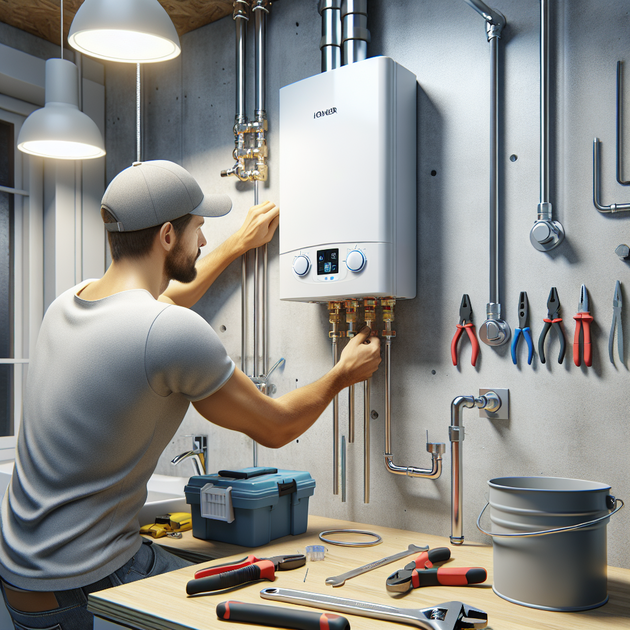What Should You Be Mindful Of When Installing a Tankless Water Heater?
Ever wondered why so many people rave about tankless water heaters? They promise endless hot showers and lower energy bills. But before making the switch, there are some important things to keep in mind—especially if you’re confident with wiring but less experienced with plumbing.
Tankless Water Heater Installation Basics
A tankless water heater isn’t just another plug-and-play appliance. Even if you’re an experienced electrician (like Minimikss from Reddit), the plumbing side can be intimidating. Here’s what matters most before starting:
- Check your local codes: Some places require permits or even an inspection. Skipping this could mean trouble down the road.
- Know your fuel type: Electric and gas models have different requirements. If yours is electric, double-check your panel can handle it.
- Water supply lines: These units often need larger pipes than traditional heaters. That means adapting or replacing sections of your existing setup.
- Proper venting (for gas): Gas units need specific venting materials and clearances. Venting mistakes can be dangerous.
- Water pressure: Low pressure can keep your new unit from working right. Most models need at least 30-50 psi.
The Plumbing Part: What Trips Up Most DIYers
It’s tempting to think “just connect the pipes,” but there are details that make or break your install:
- Shutoff valves: Make sure there are shutoff valves on both hot and cold lines near the unit for easy maintenance.
- Isolation valves: These let you descale or flush the system without shutting off the whole house’s supply—a big plus in hard-water areas.
- Tight seals: Use Teflon tape or pipe dope on threaded connections to avoid leaks.
- PVC vs copper: Match your piping material—some heaters aren’t compatible with PVC on the hot side due to heat.
- Pressure relief valve: Don’t skip this step; it’s required by code and crucial for safety.
If you’re not familiar with sweating copper pipes or crimping PEX fittings, consider practicing before touching your main lines—or ask a plumber for help with these steps.
A Real-Life Example: When Plumbing Gets Tricky
One Reddit user (Minimikss) shared their plan to install a tankless water heater after buying one online. They felt good about wiring but admitted plumbing was their weak spot—and worried they’d miss something essential.
That’s actually pretty common. For instance, some folks forget that removing an old tank might reveal corroded or outdated fittings that won’t work with modern units. Or they discover mid-project that their main water line isn’t wide enough for proper flow—which can lead to lukewarm showers instead of piping-hot bliss.
Mistakes like forgetting isolation valves or skipping the pressure relief valve can mean headaches later on—or even voiding warranties.
Your Tankless Water Heater Installation Checklist
To make things easier, here’s a quick checklist before you start:
- Verify local permit requirements
- Ensure electrical service matches unit specs (if electric)
- Check if current gas line size is adequate (if gas)
- Add shutoff and isolation valves near unit
- Select proper pipe material (copper/PEX/stainless steel flex)
- Add pressure relief valve per code
- If mounting on drywall or wood, use manufacturer-recommended anchors/supports
- If venting is needed (gas), use approved vent kits and follow clearance guidelines
If any part feels outside your comfort zone—especially soldering pipes or running new gas lines—it’s worth budgeting for pro help. Mistakes here can lead to leaks or serious safety issues down the line.
The Bottom Line
Installing a tankless water heater is definitely doable for handy homeowners—but it takes some research and respect for both wiring and plumbing basics. The payoff is worth it though: endless hot showers without waiting for a big old tank to catch up.
What part of installing a tankless water heater makes you most nervous—the wiring or the plumbing? Share your thoughts below!

Leave a Reply